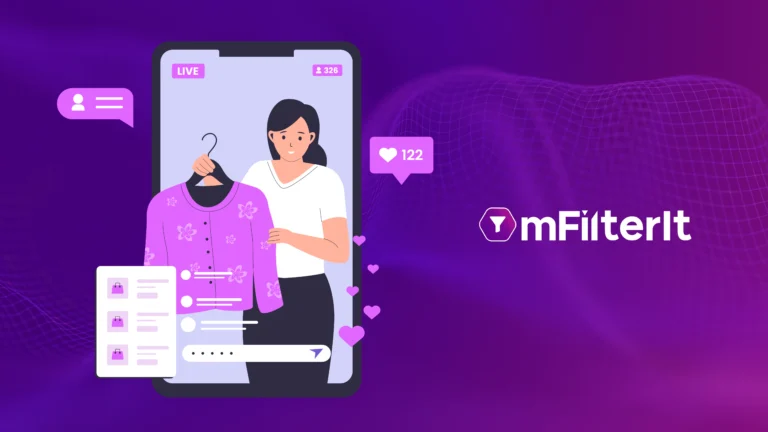Adding Trust to Digital with Enhanced
Trust Efficiency ROI optimization Brand Integrity Data Transparency |
Advertise Fearlessly
Stay ahead in a fast-paced digital ecosystem transform experiences, enhance brand performance, and enable data-driven decisions with advanced AI-powered tech, analytics, and insights.
Trusted by the World’s Biggest Digital-Front Brands


























































Build
Trust and Transparency in the Digital Ecosystem
Verify, optimize, and protect your marketing effort and brand performance in the digital landscape. Our Innovative cutting-edge advertising, marketing, intelligence and brand protection enables you to combat the challenges of digital world with the new-age tech and innovation.
Monitor and validate your advertising campaign performance, identify safe ad placements, enable contextual ad relevancy and compliance, protect the brand across the digital channels, boost the efficiency of your affiliate and influencer monitoring capability, and scale up your brand presence on the digital shelf with competitive intelligence. mFilterIt adds trust and transparency to digital!
V.O.P. Framework
Levelling up marketing 4.0 with safety, transparency and insights
Verify
Ensuring accurate and quality data
We validate your data and traffic from marketing sources to take swift action against invalid ad traffic, drive actionable insights and ensure it is reliable and authentic to reduce the risk of errors and ensure effective decision-making with true data.
Optimize
Enhance performance and efficiency
We empower you with actionable data to refine your strategies and achieve the best possible results with actionable insights leveraging the transparent data acquired to optimize marketing efforts efficiently, maximising returns and staying ahead of the competition.
Protect
Safeguard Your Brand Integrity
We protect your brand reputation by monitoring the unauthorized use of brand assets and evolved digital risks like transaction laundering and affiliate monitoring by implementing proactive security measures to reduce its impact and maintain brand integrity.
Ensuring accurate and quality data
We validate your data and traffic from marketing sources to take swift action against invalid ad traffic, drive actionable insights and ensure it is reliable and authentic to reduce the risk of errors and ensure effective decision-making with true data.
Enhance performance and efficiency
We empower you with actionable data to refine your strategies and achieve the best possible results with actionable insights leveraging the transparent data acquired to optimize marketing efforts efficiently, maximising returns and staying ahead of the competition.
Safeguard Your Brand Integrity
We protect your brand reputation by monitoring the unauthorized use of brand assets and evolved digital risks like transaction laundering and affiliate monitoring by implementing proactive security measures to reduce its impact and maintain brand integrity.
Innovative Solution To Drive Your Digital Growth

Valid8 | Ad Traffic Validation
Who is seeing your ads – Bots or Humans?
Ad traffic validation, and fraud prevention across the funnel. Protecting your advertising campaigns from Invalid Traffic or Bots on the web and app, OTTs, and CTVs. It prevents wastage of ad spend and also covers lead quality validation and DCB VAS anti-fraud.

PACE | Brand Safety
Are you checking your ad placements?
Monitor your digital ads and ensure they appear beside safe and contextually relevant content, complying with the GARM guidelines. Take proactive action against ads placed beside unsafe content and protect your brand from being associated with objectionable content.

EffCent | Affiliate and Influencer Monitoring
Are you monitoring your marketing campaigns?
Authenticate before collaborating with affiliates and influencers. Keep a close eye on their campaign performance. Check for Bots audience vs genuine followers or viewers. Also, ensure they comply with ASCI guidelines and increase ad campaign efficiency.

mScanIt | Digital Commerce Intelligence
Are you tracking brand performance vs competition?
Stay ahead of the curve with digital commerce intelligence. Leverage the power of advanced competitive analytics and actionable insights to maximize your brand performance on the digital shelf. Strategically optimize your customer’s journey at every touchpoint.

Sentinel+ | Brand Protection Suite
Want to ensure your brand’s digital assets are protected?
Protect your brand from ever-evolving threats in the digital ecosystem. Prevent brand infringement and transaction laundering. Empower your security strategy with OSINT risk monitoring and identity validation. Enable proactive security measures to safeguard your brand asset.

TickR | Creative & Content Compliance
Is your content adhering to brand and local protocols?
What Our Clients Say
-
 Nicolo Petrone CEO & Founder , 1000Farmacie
Nicolo Petrone CEO & Founder , 1000FarmacieAt 1000Farmacie, we’ve always prioritized sustainable growth and customer trust. MFilterIt helped us identify and address fraudulent activity—particularly in our affiliate partnerships—where we found 28% of website visitors at sale level were invalid. Their rigorous monitoring and actionable insights enabled us to protect our brand reputation, optimize our marketing investments, and maintain a high level of transparency in our digital operations. This partnership has underscored our commitment to providing an
authentic, value-driven experience for our customers, safeguarding both our business and our brand.Read more -
 Abdulrahman Mohamed Lipton, eCommerce Merch. & Ops.
Abdulrahman Mohamed Lipton, eCommerce Merch. & Ops.We have consistently encountered challenges related to availability, particularly with our Quick Commerce customers, as tracking availability by individual door has proven to be difficult. However, thanks to the efforts of the mScanit team and the innovative technology utilized in their tool, we have successfully enhanced our availability for Quick Commerce clients. This improvement empowers us to fully engage with our customers and unlock the full potential of our business partnerships.
Read more -
 Moumita Das PepsiCo
Moumita Das PepsiComfilterit has truly helped us to capture and work on improving one of the biggest levers of ecommerce – availability.
In today’s age of rapidly growing quick commerce, the biggest lever to scale business is to ensure the right product is available at the right place at the right time. With the q-com rapidly expanding mfilterit has helped us to provide an accurate representation of availability across 500 pincodes, thus enabling sales team to take corrective actions and improve the quality of discussions with customers. This in turn is helping us build a sustainable business month on month.Read more -
 Harneet Bhalla CMO, 1000Farmaci
Harneet Bhalla CMO, 1000FarmaciPartnering with MFilterIt, we discovered that over 9% of our affiliate traffic and up to 16% across all channels were flagged as invalid, hurting our ROI and inflating performance metrics. By leveraging MFilterIt’s real-time fraud detection and validation solutions, we reallocated our budgets toward legitimate affiliates and eliminated non-human traffic. As a result, our marketing efficiency improved by 10%, allowing us to focus on genuine customer engagement and ensuring every marketing euro is put to optimal use.”
Read more -
 Sanchit Jain Yogabar
Sanchit Jain YogabarThe foundation of Yogabar's e-commerce strategy is data-driven decision-making, and Mscanit has been a crucial ally along the way. They have helped us with insights into SKU availability, pricing trends, and competitor benchmarking thanks to their strong data scraping capabilities across many platforms - Blinkit, Instamart, Amazon, Flipkart, DMart Ready, Big Basket & Zepto.
We can proactively find gaps, improve pricing tactics, and guarantee that our products maintain their competitiveness across markets. This product has enabled us to make fast, well-informed decisions because to the platform's capacity to centralize important data, which has greatly increased our efficiency.
We greatly value Mscanit's dependable technology, easy assistance, and ongoing improvements, which enable us to maintain our lead in the rapidly evolving e-commerce market."Read more -
 Abhijeet Bishnoi Associate Manager, PepsiCo
Abhijeet Bishnoi Associate Manager, PepsiCoWe have had a fantastic experience working with mFilterIt. Their team has been instrumental in customizing reports to meet our specific needs, ensuring we have the data that truly matters for our business. The response time for our requests is impressively quick, demonstrating their commitment to client satisfaction. They are not only highly engaged but also take full responsibility for every task at hand. With their help, we've been able to drive authentic and realistic numbers in our markets, effectively highlighting the right pain points. mFilterIt has truly become a valuable partner in our success.
Read more -
 Soumajit Chail Deputy Manager, Titan Bags
Soumajit Chail Deputy Manager, Titan BagsOne of the biggest challenges we faced was regarding the regular monitoring of Price Breaches & Unavailability at the front end in spite of having enough stock at back-end stock. MFilterit Team successfully scrapped the data on a regular basis and helped us identify the gaps and improve our availability and control our price breaches successfully. Having a portfolio of more than 6000 listings was difficult to manage and monitor and that too with multiple sellers. The MScanit tool really helped in that aspect.
Read more
Making Digital Secure & Sustainable
Build seamless, secure and sustainable digital ecosystem with transparency in measurement, data-driven decision making and optimizing brand efficiencies.
We are your partner of trust
Invest in digital without fear with a trusted verification, measurement, and protection partner who can help you at every step of your digital journey.
We talk numbers, not words
Take the power in your hand with clean, detailed data that can help you make business decisions with 10x confidence.
We innovate to solve complex problems
Push your boundaries of growth with an innovative and dynamic stack of solutions to address your complex problems and achieve maximum efficiency.
We are your mirror of clarity
Market your brand digitally fearlessly with crystal-clear transparency, build trusted relationships with partners and make business decisions efficiently.
Unlock Insights on Our Expert Podcasts
Tune in to expert conversations, industry trends, and stories that inspire growth
McDonald’s CMO on Strengthening Digital Marketing with Smarter Metrics
Learn to navigate digital marketing’s challenges, protect budgets, focus on key metrics, and use programmatic and market mix modeling for smarter, efficient brand growth. Watch now!
1000Farmacie CMO on Data, AI & Brand Trust
Discover how to optimize healthcare marketing with AI, ensure brand safety, navigate compliance, and track true metrics for growth. Practical tips for trusted campaigns.
Chetan Sharma on Attribution Myths, Ad Fraud & Brand Safety
Chetan Sharma uncovers travel marketing illusions—false KPIs, flawed playbooks, and brand safety risks—emphasizing why retention and repeat bookings matter more than vanity metrics.”
Trends and Insights
Stay on top of the curve with market trends, industry updates, expert opinions and insights into the digital landscape.
Trusted by Leading Brands
Our case studies showcase the value we deliver and the trust we’ve earned across industries.
Frequently Asked Questions
What is mFilterlt?
mFilterlt is an ad-tech and mar-tech solution provider that is on a mission to solve complex roadblocks in a digital journey with the help of advanced technologies and capabilities of Al & ML.
How can mFilterIt help businesses?
mFilterlt is a tech-driven company which helps digital brands at every stage of their growth journey in the digital ecosystem. We help brands like you to validate your ad traffic, optimize your marketing efforts across platforms with a data-driven approach and ensure a safe digital environment.
Are mFilterIt solutions compatible with different platforms?
Yes, mFilterlt solutions are easy-to-integrate with major platforms for a seamless user experience.
What are the core values of mFilterlt?
mFilterlt's core values are innovation, impact and integrity which drive the mission to make the digital ecosystem safe and efficient.
How can I get started with mFilterlt?
It's fuss-free. We have a plug-and-play model which takes no time to start. Connect with us at [email protected] to get started.


















